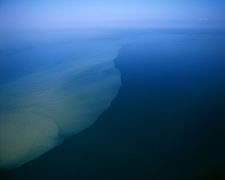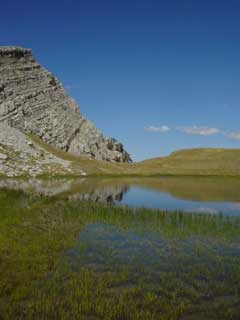 Phases & Tools
Phases & Tools
This initiative will not seek to duplicate or supplant those actions, but to use their output in a coordinated way.
This initiative should in the first instance be sharply focussed on one simply defined task:
• To identify and eliminate the most significant sources of pollution present in the Mediterranean.
This would involve analytical identification of the problem followed by pragmatic development of the solution and then linkage to the wider political framework to encourage the beneficiary country to pursue the solution. From our experience inside Europe, and in other regions (in particular the DABLAS initiative) it has been shown that in order to make practical progress towards concrete actions this process can be divided into a number of phases.
I- PHASES
Phase 1 – Problem Identification
This first phase will concentrate on assessing the status of the Mediterranean environment, and the impact that pollution exerts on it, to identify and quantify the problem at regional and national levels. It is not intended to create new research projects but to draw upon previous and ongoing work, particularly linked to the Barcelona Convention / Mediterranean Action Plan.
The main sources of pollution, the activities that produce it as well as the local hotspots would be identified and the magnitude of their contribution to the environmental impact assessed.
This will allow listing environmental pollution problems prioritised in order of magnitude. Each problem should ideally be accompanied by a first project concept for its solution.
At the end of this phase, the listings could be grouped together and particular sectors taken forward as pilot exercises. Wherever possible, coherence with other thematic groupings (i.e. those of the MSSD) should be sought but the main focus should be on pollution sources in line with the text of the Commission Communication in which this initiative was originally proposed.
“The goal should be to tackle all the major sources of pollution including:
• industrial emission,
• municipal waste,
• and particularly urban wastewater.”
A lead country or organisation should then be identified for each of the sectors depending on their interest, experience and expertise.
As an indicative example the European Commission could be prepared to take the lead on the Urban Wastewater sector, linking it to the EU Water Initiative. Equally on the regional dimension of data gathering the Commission, in cooperation with the EEA could take the lead.
Phase 2 – Project Prioritisation
In this phase, the expertise and resources of the international organisations responsible for the financing of environmental infrastructure, the bilateral donors, along with the national authorities responsible for financial planning would be mobilised. The exercise would be to reduce the original priority lists down to those problems that appear to have solutions that can be realistically financed either through international assistance or own funds. The grouping of international donors METAP would appear to have an important role to play in this phase. It is also clear that coordination with the World Bank/Global Environment Facility “Strategic Partnership for the Mediterranean Sea Large Marine Ecosystem” will be needed due to the significance of its work.
Phase 3 – Project development, implementation and evaluation
In this phase, the projects would be developed to the point where they can be financed by the International Financial Institutions or other donor groups and progress monitored. Project preparation facilities using grant assistance have proved invaluable in other regions in developing projects to the point where they can be financed by the International Financial Institutions. The mechanisms of the Euro-Mediterranean Partnership and the European Neighbourhood Policy could then be used to evaluate the results of the exercise and follow progress in eventual implementation as projects are launched. They would also serve to raise the political profile of depollution efforts in ministries other than those responsible for environmental issues. Sub-committees established under the Association Agreements would play an important role in this respect.
II- TOOLS
The ENP Action Plans
Implementation of the ENP Action Plans offers the opportunity to pursue concrete actions contributing to the goals of this initiative.
The Short and Medium Term Action Programme (SMAP).
Over the coming year, the SMAP process will be reviewed to take account of the political developments in the region, the end of the MEDA programme and the expected adoption of the European Neighbourhood and Partnership Instrument (ENPI). The successor network to be considered could be used to retain the overview of the initiative.
The Activities and institutions linked to the Barcelona Convention
Full use should be made of the institutions and activities linked to the Barcelona Convention, particularly in relation to the analysis of the pollution problems faced by the Mediterranean Sea. A number of actions and programmes linked to de-pollution have already been agreed and this initiative should serve to support their progress. The Mediterranean Strategy for Sustainable Development offers an overall strategic framework and could provide input when defining priority areas and actions.
METAP
The possibility of the Mediterranean Environmental Technical Assistance Programme (METAP) playing a role in the identification and preparation of bankable projects needs to be explored. It will have an important role to play in bringing together the donor community and IFIs.
The Euro-Mediterranean Partnership Ministerial Meetings
The sectorial ministerial meetings under the Euro-Mediterranean Partnership will continue to offer the high level forum at which environmental integration measures in other sectors can be pursued.
 you are not logged in
you are not logged in







